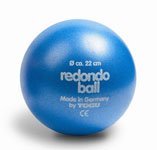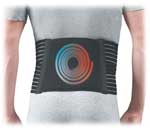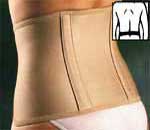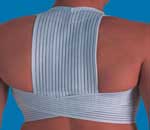Stress Fracture Back & Football
May 13 2008 | Articles

Spondylolysis (stress fracture) Injury Introduction
Medically termed as Spondylolysis, the stress fracture involves an overuse of the lower back. In sports, it is the most prevalent form of lower back injury. It is classified as either a stress reaction or a stress fracture of the lower back.
Spondylolysis occurs in the L5, the bottom-most of the five lumbar vertebra present in the base of the back. The L5 sits at the exact point where the movable lumbar spine connects to the immovable pelvis. Spondylolysis affects this vertebra since it experiences the most stress during athletic activities.
Since sporting movements involve using the body’s weight to generate tremendous amounts of force, the lumbar spine is often obliged to bear extreme loads. When the muscle forces are transmitted through the spine, bone fatigue occurs. This fatigue can lead to micro tears in the L5 vertebra.
Spondylolysis Signs & Symptoms
This condition is almost limited to adolescent football players since there are very rare occurrences beyond this age group. Spondylolysis is indicated by a feeling of pain in the lower back. The ache will increase with participation in physical activity and will correspondingly subside once the person is at rest.
The back may feel especially sore when the player bends backwards, particularly if he attempts this while standing on one leg. If a patient is suspected of Spondylolysis, his general practitioner may refer him for a scan in order to arrive at an accurate diagnosis.
Spondylolysis Treatment
Usually resting for about six weeks would serve as a sufficient treatment for Spondylolysis. In order to facilitate faster healing, the patient may opt to use a back brace since it can provide support as well as prevent movements that may aggravate the vertebra’s condition. The brace will also prevent the adolescents from engaging in excessive physical activity.
It is recommended to do exercises designed to improve the lower back’s muscular stability. These exercises may be effectively performed through the use of Swiss balls (view below). Cardiovascular fitness may be developed through low-impact exercises such as pool running. This activity can be aided by a buoyancy belt.
Spondylolysis Prevention
As much as possible, football should be performed on grassy fields. Unlike concrete or Astroturf, grass can reduce the force transmitted through the spine since it possesses a little give. Training sessions should be monitored carefully, with their frequency, intensity and duration increased at a steady and gradual pace. Meanwhile, competitive games should also be restricted to a maximum of 30 games per season. It is also necessary for players to have sufficient rest periods after each match and training session.
Good posture must also be observed. Slouching prevents the back muscles from effectively preventing back injuries. Also, sitting in front of the computer for extended periods of time must also be avoided. In such an instance, the person must take regular breaks. The use of a seating support is highly recommended.
In order to maintain a good posture, the muscular stability of the spine must be maintained. ‘Core Stability Exercises’ using exercise balls will help in achieving this. The use of the Back supports will aid healing and prevent further problems.

Click here to view exercise balls to strengthen spinal muscles
Football Rescue Recommends Back Supports
![]()
![]()
![]()
![]()
![]() 5 Star Rating
5 Star Rating

Elasticated Back Brace
The Elasticated Back Brace offers compression and support without restricting movement. The two-way elasticated stretch fabric has been specifically designed to provide relief to injuries such as lower back pain, lumbago and rheumatic conditions
. The fabric is breathable, lightweight and follows the contours of the body, which reduces the chance of slipping. It features an adjustable front closure for added comfort and fit, as well as an additional compression strap.
This support can be used during a range of sporting activities, at work or at Football Injury Home
![]() View Back Support
View Back Support



![]() View other Back Supports
View other Back Supports
